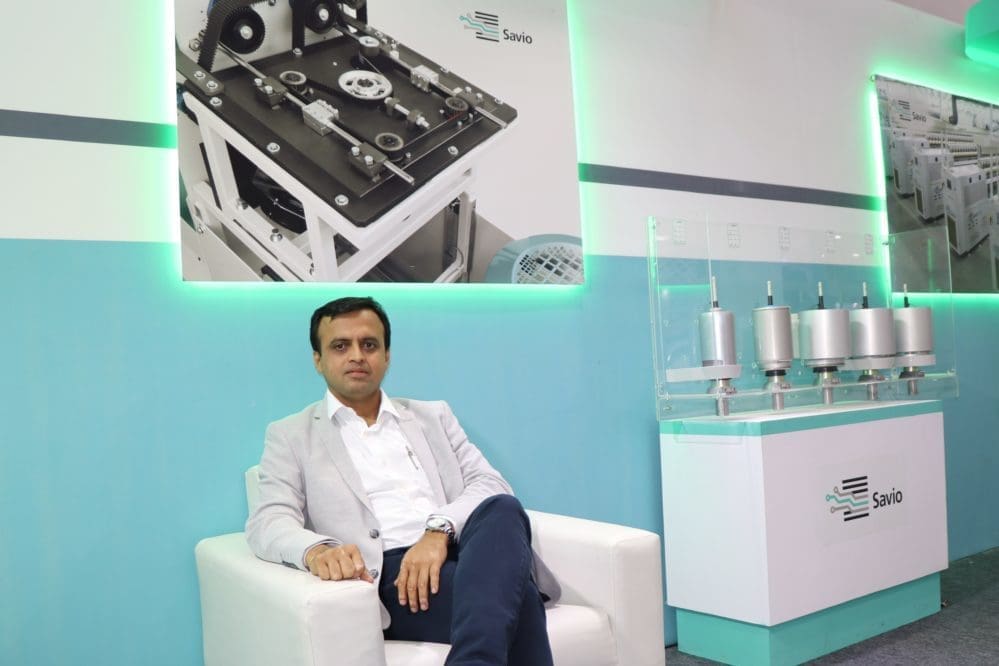Savio is present since late 1950s in twisting technology, with a wide range of Two-for-one (TFO) twisters diversified for different market requirements, Savio twisting machines respond to the demands of customers looking for a significant reduction in labor and energy. In an exclusive chat with Textile Value Chain, Shrikant Gajabi, Sales Director, Savio India speaks on the market trends.
How do you see the downtime of the industry at present?
The market scenario for machinery demands, is little tough now. As we all know, there is reduced demand for yarns, the mills are having challenging time and overall value chain of textiles is facing lower demand for textiles, moving forward, we foresee scenario to improve , once the cotton stabilizes and there is demand for textiles due to upcoming festive season.
How are the investment patterns of textile business owners purchasing new machineries?
Presently there is little investment in terms of capacity addition, However, some investments happening in value addition, debottlenecking and to reduce man power cost.
We foresee, industry would look for more of value addition & modernising the ring doubling capacity, which is still in large capacity in India, despite the fact that, there is no organised ring doubling machine manufacturer. The ring doubling units are labour intensive and output package of these machines have high number of joints, which is not desired in present scenario. So many will go for modernization of ring doubling machines, which are predominantly installed in the South of India.
Quoting the feedback from the market, the life of machines is three to five years. How much you think on the modernization part?
Modernization is ongoing process, but I am particularly focusing on the ring doubling segment, which is still running in large capacity in India. They have not been modernized and so in near future, we will see that the modernization of ring doubling in TFO.
As regards to technology adoption, the twisting machines are in particular, very simple and there very less scope for technology adoption. Thanks to Savio R&D, which could add electronic drive system with axial displacement on TFO. This is like precision winder sitting on top of TFO, giving flexibility to the user to produce dye packages on TFO directly, eliminating soft package winding process and improving uptime of the machine. Further pneumatic yarn threading added to the TFO – gives advantage to the user to employ less skilled workers
What type of companies you will be targeting?
We foresee growth in value added twisted yarns, very coarse yarn twisting, twisted yarns with lycra would find their niche in the market and Ring doubling segments in organized sector.
We have certain cases in recent past, where in organized sector replaced the ring doublings with TFOs and have accrued significant saving in labour, power and overall profitability was better, at the same time the quality of the final output was far superior to adopt to high speed warping machine requirement.
How are you planning to address, this industry segment?
We are already doing the business cases for them that how the techno economics work in their favour, when they replace the ring doubling capacity. This becomes even more practical as there is no ring doubling manufacturing, all the machines are either seconds hand or converted, so when you have no back up support from manufacturing certainly these units suffer or they work on a substandard practice and will be eventually be forced out from the scenario. so I feel in future we will see lot of changes in this segment.
What are the key pain points of their challenge you address?
First pain point is the amount of labour required in these units, though we are country of 1.2 billion people, we see lack of willingness to work in textile mills, mainly due to hardship the worker needs while working in units. Second pain point is quality of yarn in terms of number of joints, which are as high as 20 to 25 per package, to avoid this ring doubling units have to invest on Auto winding machines, which also requires additional man power and investment. These day’s yarn buyers or end user, wants one or maximum two joints per package. The third pain area is the overall power and utility cost. On all above aspects our TFO Machines score better and we have two models to offer to the industry COSMOS and SIRIUS.
Explain SAVIO after sale support
Across India, we have network after sales set up at various locations like Coimbatore, Guntur, Kolhapur, Ahmedabad, Ludhiana to serve the installation in respective locations. We have large trained service personnel and technologies to address the needs of our customers, we also have e-lab to service, electronic PCB and drives at Coimbatore.
By – B Swaminathan

